
Tile Patterns to Know as a Designer, Vendor, or Homeowner
Summary
Tile patterns play a crucial role in design, offering an array of options from simple straight lays to intricate mosaics. Each pattern has the power to transform a space, enhancing both its functionality and aesthetic appeal. Whether you’re a designer, vendor, or homeowner, selecting the right tile pattern is essential for creating visually appealing and practical environments.
Reflection Questions
Which tile pattern do you find most visually appealing, and what about it captures your attention?
How might your choice of tile pattern change depending on whether you’re designing for a home, a commercial space, or a rental?
What challenges or opportunities could arise from using a more complex tile layout, like a windmill or basket weave, in your next design project?
Journal Prompt
Reflect on a space in your home or a project you’ve worked on where tile played (or could play) a significant role in the design. Consider how the choice of tile pattern—such as herringbone, straight lay, or mosaic—might influence the feeling, functionality, and personality of the space. What message would the pattern send, and how would it support the overall atmosphere you’re trying to create?
Whether a kitchen backsplash, pool surround, or powder room floor, tile patterns are expressions of style, creativity, and personal taste. You might be a designer dedicated to crafting unique interiors, a vendor showcasing the latest trends, or a homeowner creating a vision board for your upcoming remodel. Regardless, there are so many patterns from which to choose. From the timeless elegance of Moroccan mosaics to the classic Versailles to the contemporary subway tile, each pattern offers a distinct visual language that can enhance both functionality and aesthetic appeal. In this article, we will explore a variety of tile patterns so you have an encyclopedia from which to draw both inspiration and information. Whether a vendor, designer, or homeowner, read on to learn all about the most popular tile patterns.
Tile Patterns to Know Whether You’re Redoing Your Bathroom or Designing a Client’s Kitchen
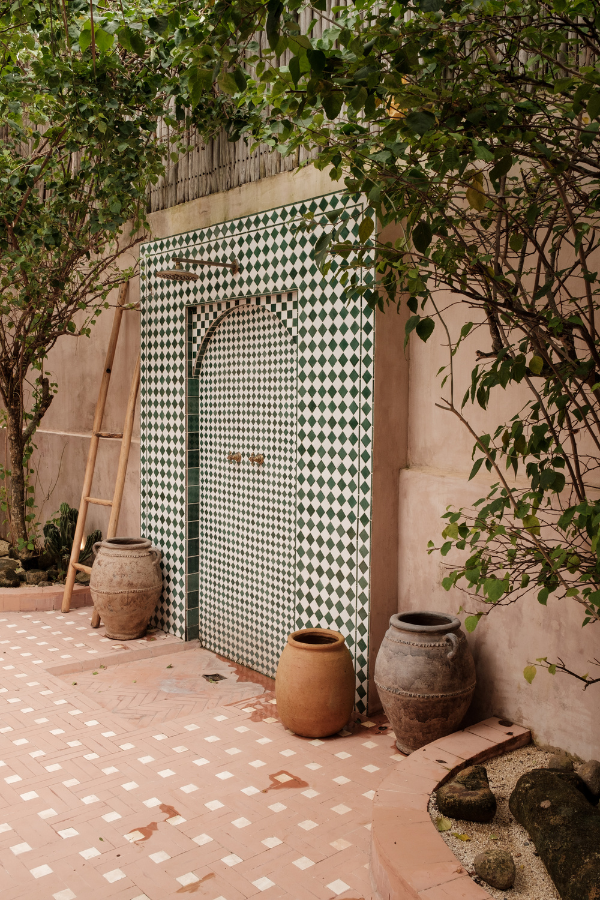
It seems like there are a million tile patterns. Straight Lay or Grid, Diagonal or Diamond, Running Bond or Brick Pattern, Herringbone, Chevron, Basketweave, Windmill, Pinwheel or Hopscotch, Versailles, Hexagon, Fish Scale or Fan, Arabesque, Cobblestone, Checkerboard, Modular, Ashlar, French Pattern, Subway, Staggered, Parquet, Labyrinth or Maze, Quatrefoil, Pebble, Harlequin, Spiral or Circular, Interlocking, Roman Opus, Spanish Lace, Trellis, Kaleidoscope, Fleur-de-Lis, Cosmati, Stepping Stones, Encaustic, Moroccan Star, Ragno, Victorian, Octagon and Dot, Chateau, Terrazzo, Random, Ombre, Bargello (or Flame Stitch), Linear, Double Basketweave, Triple Basketweave, Rosette, Tessellation, Marquetry, Art Deco… And that’s only fifty of hundreds! Let’s take a closer look at a few of these tile patterns—prioritizing the most commonly selected.
Fuel your creative fire, thrive with support from peers, & make 2025 your firm’s best year yet!
JOIN THE DESIGNDASH COMMUNITY

Straight Lay or Grid

The Straight Lay, or Grid pattern, is the simplest and most classic tile layout. Tiles are installed in straight lines so that the grout lines form a grid, creating a clean and orderly appearance. This pattern is highly versatile and works well with virtually all types of tile and decor styles, making it a popular choice for both contemporary and traditional spaces.
Diagonal or Diamond
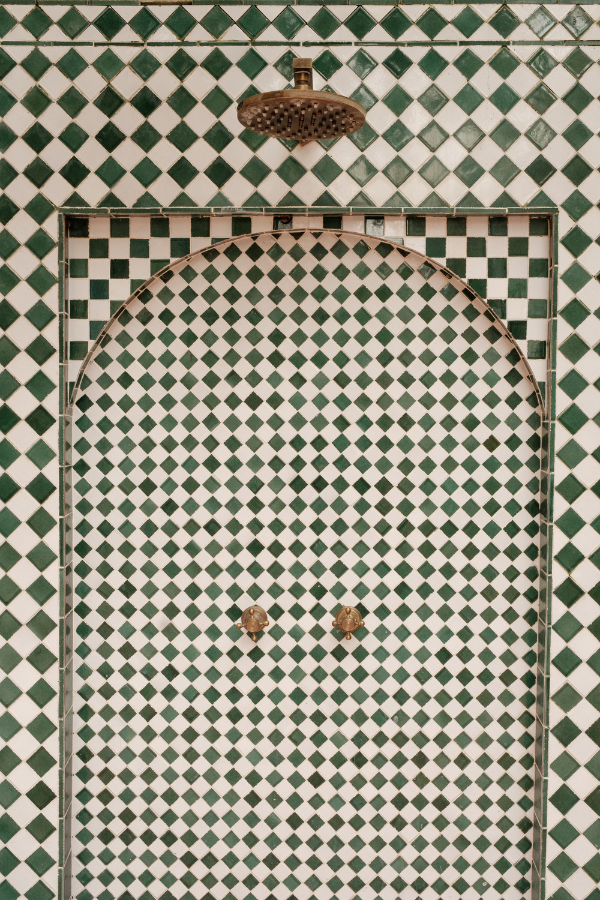
In the Diagonal or Diamond pattern, tiles are set at a 45-degree angle to the walls, creating a dynamic effect that can make spaces seem larger. This pattern adds visual interest to the floor and is particularly effective in small areas like bathrooms or hallways, where it can give an illusion of depth and space.
Windmill

In the Windmill pattern, four rectangular tiles are arranged around a smaller square tile to form a windmill shape. This pattern provides a strong visual impact and adds a sense of movement and flow to the floor, ideal for larger spaces or as a feature area in a room.
Running Bond or Brick Pattern
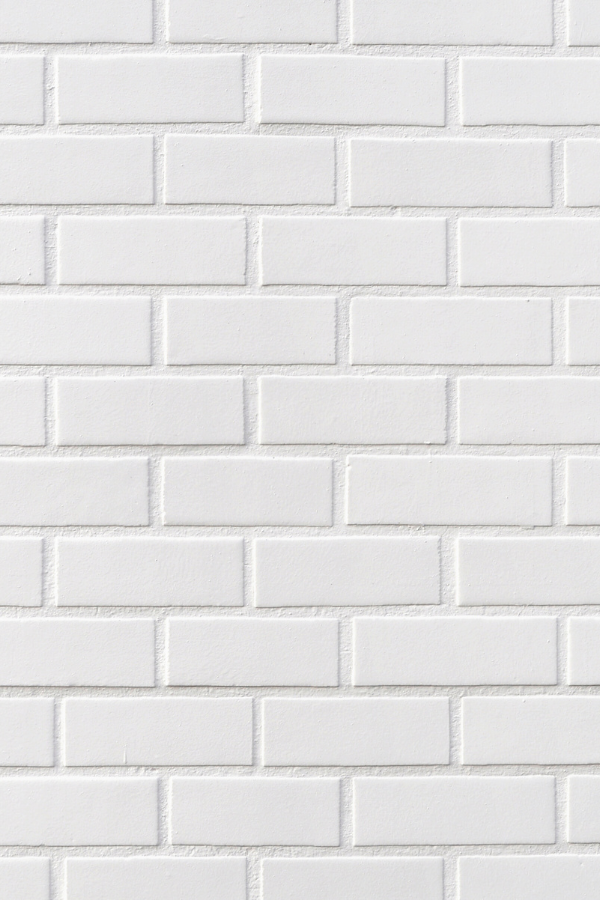
The Running Bond or Brick pattern mimics the layout of bricks in a wall, with each tile offset from the tiles in the row directly above and below it. This staggered approach helps to hide imperfections in the substrate and is commonly used with subway tiles in kitchens and bathrooms for a timeless look.
Pinwheel or Hopscotch
The Pinwheel or Hopscotch pattern uses a small square tile at the center of four larger tiles. This playful pattern adds complexity and visual appeal to the floor, making it suitable for areas where a unique, engaging look is desired.
Cobblestone
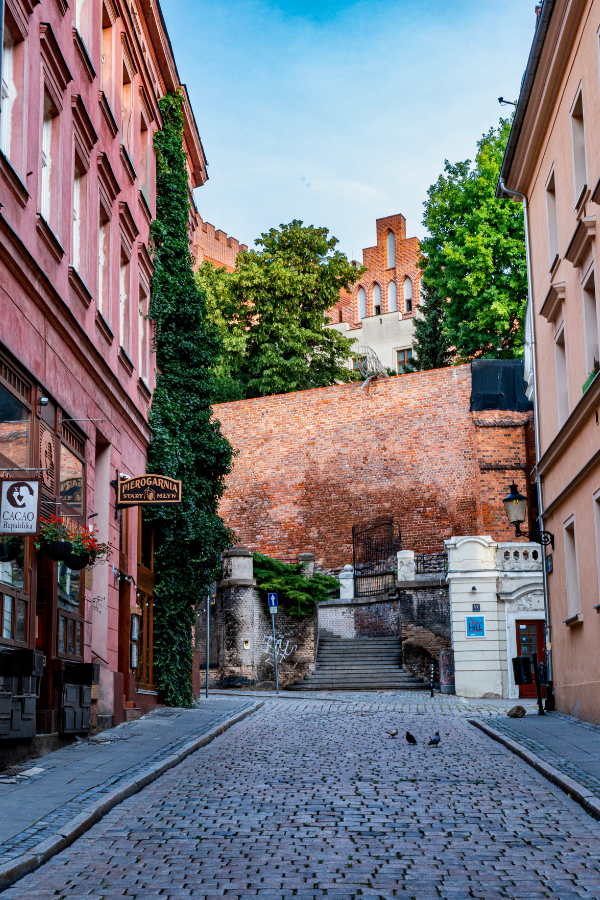
Cobblestone pattern uses a mix of different-sized, irregularly shaped tiles to mimic the look of an old cobblestone path. This rustic pattern brings a charming, old-world feel to spaces and is especially popular in outdoor areas or homes with a country or vintage style.
Fuel your creative fire & be a part of a supportive community that values how you love to live.
subscribe to our newsletter
*please check your Spam folder for the latest DesignDash Magazine

Hexagon
The Hexagon pattern features six-sided tiles that fit together to create a honeycomb effect. This contemporary pattern is increasingly popular for adding a modern, geometric touch to bathrooms and kitchens, often used on floors and walls alike.
The Versailles Pattern Tile
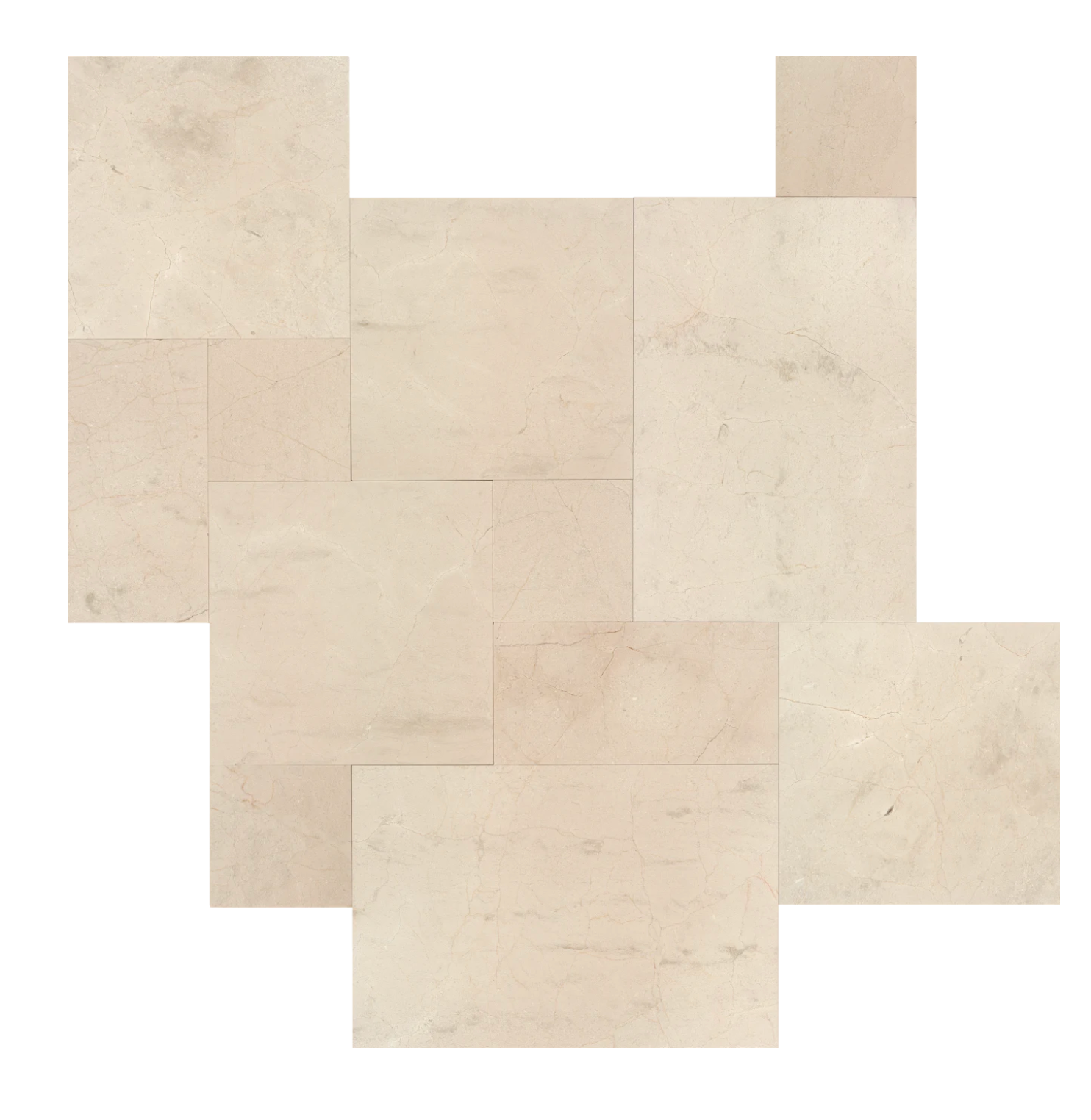
The Versailles pattern, also known as the French pattern, is a classic and elegant tile and stone layout that has been popular for centuries. This pattern uses a combination of four different tile sizes to create a seemingly random and interlocking design that adds visual interest and depth to a floor or wall. The traditional Versailles pattern typically includes two squares (usually the larger components), one rectangle (twice as long as the smaller square tiles), and one smaller square.
These tiles are arranged in a repeated, puzzle-like sequence that can dramatically enhance the aesthetic appeal of a space. The installation is designed to mimic the natural, random arrangements found in stone flooring, adding a timeless and luxurious feel.
The Versailles pattern is often used with natural stone tiles like travertine, limestone, or slate but can also be replicated using ceramic or porcelain tiles. It’s popular in a variety of settings, from traditional homes and historic renovations to more modern and contemporary spaces, due to its versatile and attractive appearance.
Ashlar Pattern
The Ashlar pattern involves laying rectangular tiles in staggered rows, each row offset by a third, a half, or another fraction. This pattern is often used with stone or wood-look tiles to create a more natural texture with a varied appearance that mimics traditional stonework or hardwood floors.
Checkerboard

The Checkerboard pattern alternates tiles of two colors in a classic checkerboard arrangement. This bold, dramatic layout can be visually striking and is often used in formal settings or to add a retro flair to modern spaces.
Fish Scale or Fan Pattern

Fish Scale, or Fan pattern, consists of tiles shaped like scales or fans, arranged to overlap in a manner that resembles fish scales or waves. This decorative pattern is particularly favored for backsplashes or bathroom walls where a fluid, organic look is desired.
Arabesque
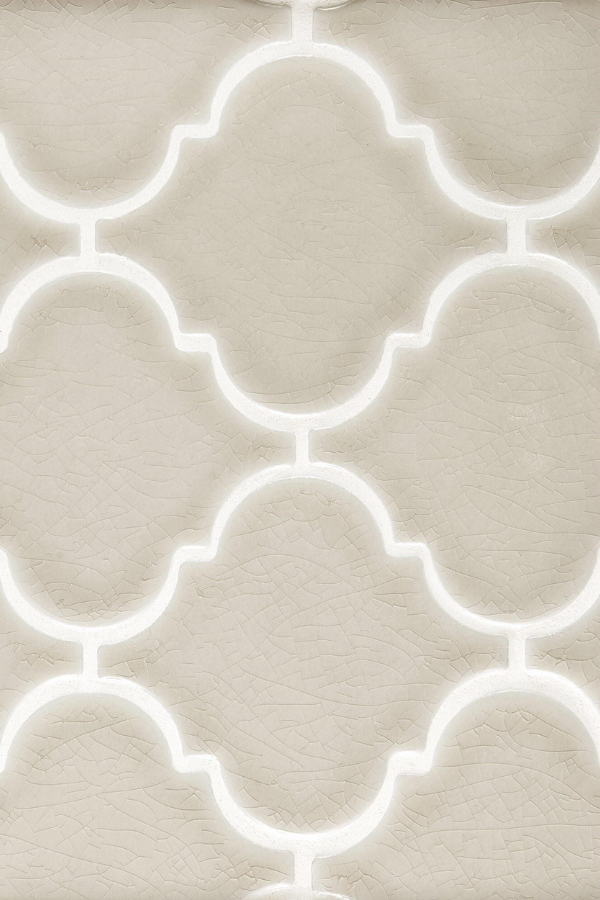
Arabesque tiles feature an intricate, curved pattern that often resembles flowers or intricate geometric shapes. This elegant pattern can add a luxurious and exotic feel to a space, commonly used in backsplashes or as decorative accents in bathrooms and kitchens.
Labyrinth or Maze Patterns
These complex patterns create a visual puzzle that can captivate and intrigue. Labyrinth or maze patterns are often used in large, open spaces where the floor itself can become a focal point of the interior design.
Quatrefoil or Moroccan
The Quatrefoil pattern includes tiles that mimic a four-lobed clover shape, common in Moroccan and Moorish architecture. This sophisticated pattern brings an artisanal, worldly charm to interiors, suitable for floors, walls, and ceiling accents.
Pebble
Not to be confused with penny tile, pebble tiles are made from small, smooth stones that are mounted on mesh backing for easy installation. This pattern provides a natural, earthy look and a textured feel underfoot, ideal for showers and bathroom floors where a slip-resistant and massage-like surface may be beneficial.
What’s the Difference? Commonly Confused Tile Patterns

The names of multiple tile patterns can sometimes be used interchangeably by manufacturers or brands, especially since many patterns are based on classic designs that have evolved over time and can vary slightly in interpretation. Below are a few common examples where you might see this happen.
If you’re still confused, consider working with a designer who understands you personal style and has experience identifying the perfect pattern for your space. This can help take the guesswork and frustration out of sifting through backsplash or floor tile patterns.
If you’re a manufacturer, vendor, or designer, bear in mind that these variations in terminology can sometimes lead to confusion when specifying products. As such, it’s a good idea to use detailed descriptions and visuals to ensure clarity when listing more patterns on your site or using tiles in design projects.
Herringbone vs. Chevron

The herringbone pattern and the chevron pattern are often confused. Each tile pattern features a zigzag composed of large or small rectangular tiles (usually a single shape), but herringbone tiles meet at a 90-degree angle creating a broken zigzag, while a chevron pattern meets point to point and typically have angled ends, creating a continuous zigzag.
Subway Tile vs. Any Other Rectangular Tiles
Originally defined as a specific style of white, glazed ceramic tile used in New York City subway stations in the early 1900s, the term “subway tile” now broadly refers to any rectangular tile design with a 2:1 or similar ratio, regardless of color, material, or finish.
Basketweave vs. Mosaic

While “basketweave” specifically refers to a pattern that mimics the weave of a basket, it’s sometimes used loosely to describe various small, square tile patterns arranged to create a woven effect.
This can overlap with the term “mosaic,” which traditionally refers to any small, multi-colored tiles arranged in intricate patterns. As pictured above, these can be square and rectangular tiles, or they can be organic in shape.
Hexagon vs. Honeycomb
Both terms describe six-sided tile patterns, but “honeycomb” might also imply a specific textured or three-dimensional appearance, while “hexagon” generally refers simply to the shape of the tile.
Terrazzo vs. Composite
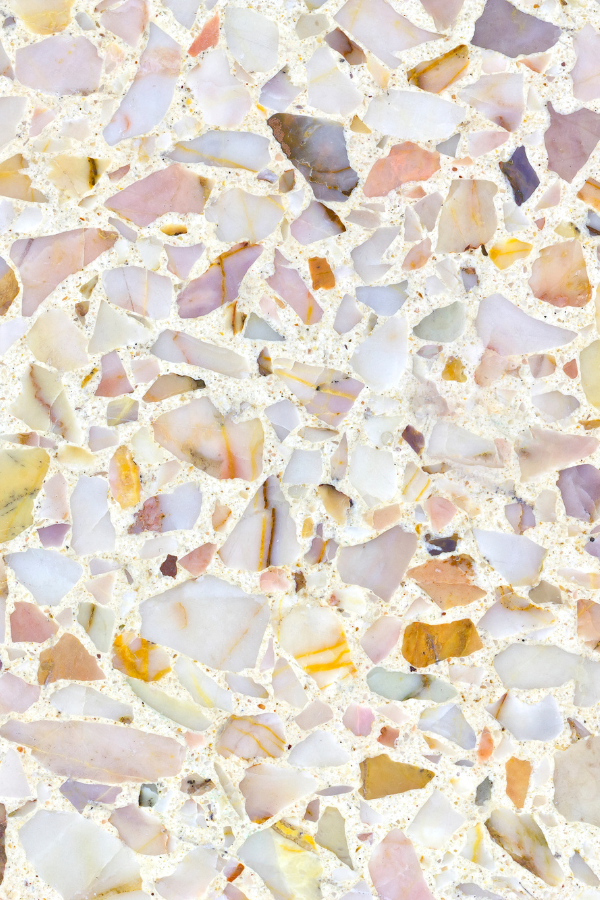
Originally a composite material made of chips of marble, quartz, granite, or glass poured with a cementitious binder, “terrazzo” is now also used to describe tiles that mimic this pattern, regardless of their actual material composition. These pieces are typically organic in shape and are rarely small rectangles or small squares like mosaic tends to be.
Harlequin vs. Checkerboard
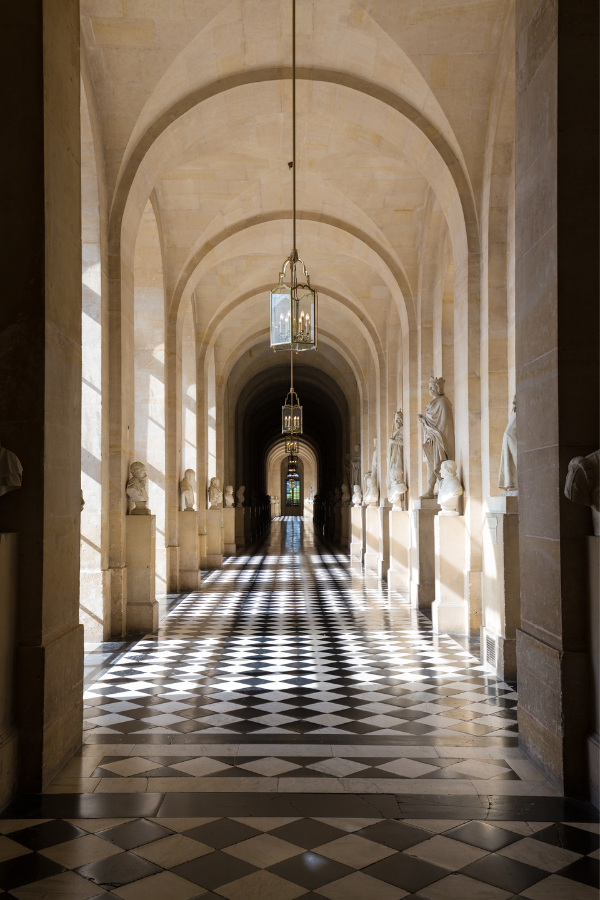
The Checkerboard pattern is a classic and simple design where tiles are laid out in alternating colors, typically black and white, to form a clear and contrasting checkered effect. This pattern uses square tiles arranged in a straight grid formation. It’s straightforward, creating a bold, retro look that can be scaled to fit various spaces. The visual impact is strong and geometric, often used on floors to make a striking statement.
The Harlequin pattern, while similar to the Checkerboard in its use of two colors, differs in the orientation of the tiles. In the Harlequin setup, the square tiles are rotated 45 degrees to form diamonds rather than squares. This diamond arrangement adds a dynamic and somewhat more sophisticated or playful twist to the standard Checkerboard pattern.
The Harlequin pattern can also appear more intricate and offers a different visual flow, leading the eye along the diagonal lines.
What About Pool Tile Patterns?

Pool tile patterns can significantly enhance the aesthetic of a swimming pool while also providing a durable and practical surface. Each of the following patterns has its own set of characteristics and can complement different pool shapes and styles.
When weighing pattern ideas for a pool, consider both the aesthetic appeal and the practicality, as the pool’s surface needs to be safe and durable as well as attractive.
Waterline Tiles
These tiles are used at the waterline of the pool, where the water meets the air. They are often designed to be visually appealing since they are highly visible. Common patterns include mosaic tiles, which can feature geometric patterns or playful designs like sea creatures or waves, adding a unique touch to the pool.
Mosaic Patterns

Mosaic tiles are a favorite for pools due to their versatility and the artistic flair they can add. They come in various colors and materials, including glass, which reflects light and creates a sparkling effect in the water.
Popular mosaic patterns include random mixes of colors, designs that mimic the natural variability of stone, or detailed motifs where smaller tiles create images of marine life, mandalas, or floral designs.
Brick or Running Bond
This pattern uses rectangular tiles arranged in a staggered brick-like pattern. It’s a simple yet effective layout that works well with traditional or rustic pool designs. It’s particularly effective with natural stone or ceramic tiles.
Diamond or Diagonal
Setting square tiles at a 45-degree angle creates a diamond or diagonal pattern, which can make the pool area appear larger. This pattern is also useful for adding visual interest and can be used with a variety of tile colors to enhance the pool’s design.
Checkerboard Pattern
For a more retro or classic look, the checkerboard pattern can be used in pool designs. This involves alternating colored tiles, usually in black and white, which can make a bold statement and give a clear, clean look to the pool bottom or sides.
Pebble Finish
While not a tile, pebble finishes are a popular choice for pool surfaces. It consists of small, smooth pebbles embedded in plaster or concrete. This finish creates a natural, beach-like feel and is available in various colors, offering a more textured and vibrant appearance than flat tiles.
Border Patterns
Borders can be created around the pool’s edge or at specific intervals with contrasting tile colors and patterns to delineate different areas or add decorative detail. This can be done using tiles that contrast in color or finish from the main pool tiles.
Geometric and Repeating Patterns
Large-scale geometric patterns can be used on the pool floor to create a focal point. These can include large circles, stripes, or any abstract geometric form. They often use varying shades of blue and white to maintain a water-themed aesthetic but can include any color combination.
Bookmark this Article to Save Your Pattern Encyclopedia
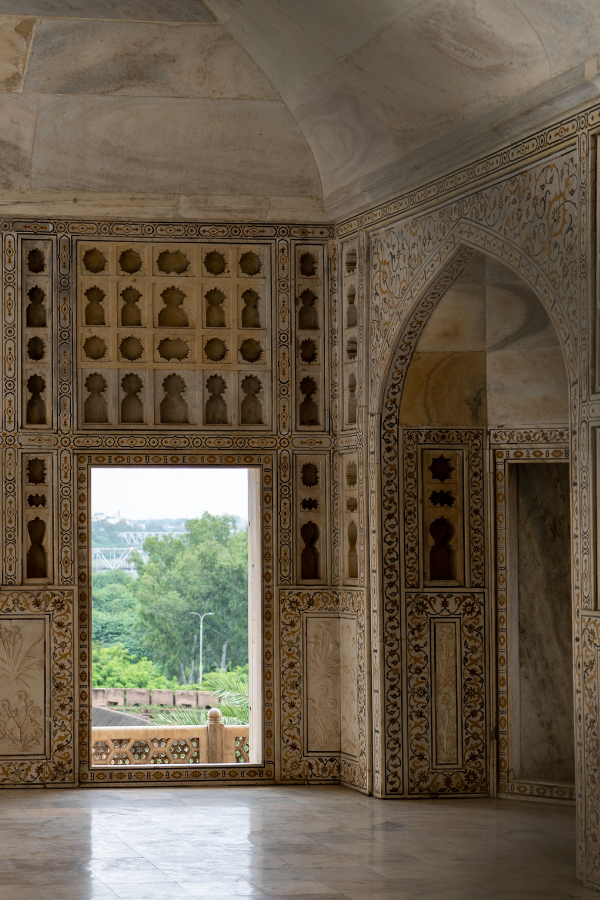
Whether you’re drawn to the subtle sophistication of the Ashlar pattern or the dynamic allure of a mosaic layout, the right tile can serve as both the foundation and the highlight of your design. Choosing the perfect pattern not only enhances the aesthetic appeal but also complements the functional requirements of any living space. Remember that many manufacturers and vendors will provide their own pattern guide (like this one from Daltile) on their websites.
Whatever potential your next project holds, bookmark this page to save our pattern encyclopedia. Don’t forget to let us know which you choose!
Design Dash
Join us in designing a life you love.
Do Personality Tests Actually Help You Hire Design Firm Employees?
Can personality tests improve design firm hiring or just complicate it? Learn how to use them wisely with tips from experienced firm owners.
Cultivating Company Culture: Firm Owners List Their Top Tips
Learn what design firm owners Laura Umansky, Bryan Yates, Lorna Gross, and Morgan Farrow have to say about cultivating a firm culture below.
Draw Design Inspiration from These Architectural Digest Features
From Munich to Paris, we’re spotlighting three recent features from Architectural Digest that made us pause and take note.
How Much Money Should I Have Saved Before I Quit My Job to Start My Own Firm?
Thinking of leaving your design job to start your own firm? Here’s what real founders say about how much savings you need.
Five Female Interior Designers in Miami to Follow in 2025
Miami’s design scene is hot and these five women are on fire. Read profiles of passionate female interior designers below.
From Paris to New York: These Are the Most Stunning Art Deco Apartments in the World
From the iconic skyscrapers of New York City to the beachfront beauties of Miami Beach and the historic gems of Paris, these are the most stunning Art Deco apartments in the world.








